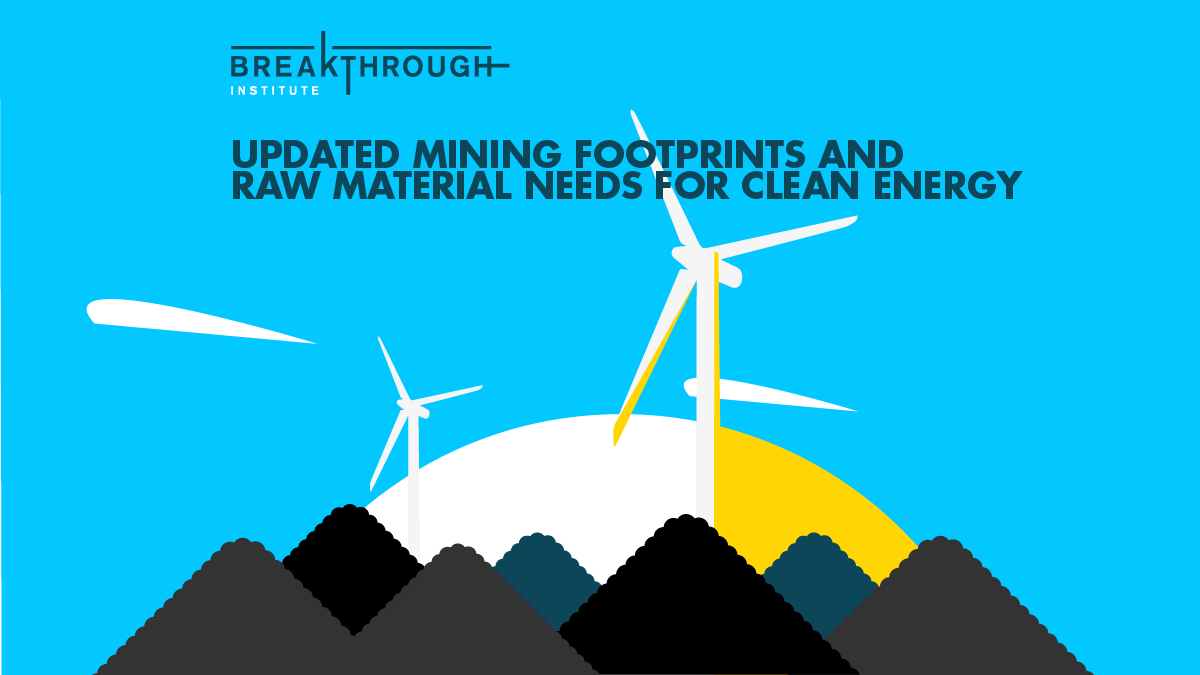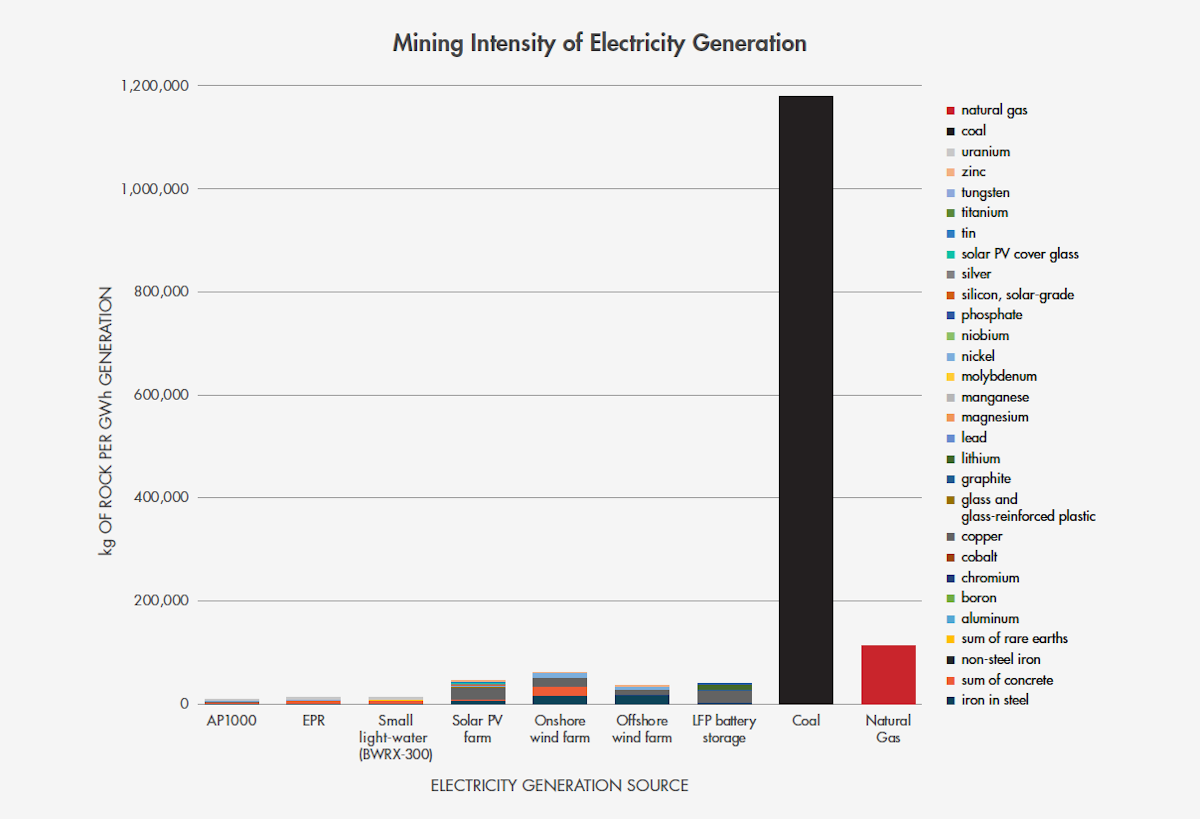Updated Mining Footprints and Raw Material Needs for Clean Energy
Challenges and opportunities for managing energy transition mining impacts

-
-
Share
-
Share via Twitter -
Share via Facebook -
Share via Email
-
Executive Summary
Shallow attacks on low-carbon energy technologies—solar, wind, or nuclear power—often involve pointing to unsightly mines carved into the Earth’s surface. Many such superficial critiques frequently only reinforce cynicism rather than sincerely explore problems and solutions. After all, mined minerals remain inseparable from modern industrial society, from steel bridges to aluminum power lines to the copper wire within home electrical boxes.
But it does not help that alarmed claims about mining regularly serve as ammunition in the circular firing squads all too commonly seen in energy transition discussions. Committed renewable energy absolutists warn against catastrophic impacts from uranium mining and characterize nuclear power stations as grotesquely wasteful mountains of concrete and steel. Meanwhile, nuclear energy proponents hit back at the vast quantities of copper, steel, and aluminum required to support sprawling solar and wind farms. The result of such sniping is that the public is now receptive to both narratives: that solar, wind, and batteries demand a heavy toll from the earth in the form of mining, and that the uranium and construction costs of nuclear power belie its low-impact, low-carbon reputation.
The mining impact considerations of the energy transition are undoubtedly important, but these misleading narratives have taken on a life of their own and now warrant correction. A rational comparison of the metal and mining footprints of clean electricity technologies—contrasted with the material requirements of fossil electricity—can help ground the debate over the future of our energy system. Doing so is the purpose of this report.
One would think that the material requirements of clean energy technologies are already well understood. In practice, though, commonly cited reports and peer-reviewed scholarly papers have tended to lag several years behind the current real-world state of play, particularly for rapidly evolving and growing technologies like solar and wind power. At the same time, such previously published comparisons have had to rely on older literature with often-dated values for steel and concrete usage in nuclear power plants. The result of these known shortcomings is that arguing commentators select evidence that best aligns with their predetermined position.
Our updated analysis can help constructively ground clean energy discussions moving forward. In particular, this report goes beyond other analyses by directly comparing the mining footprint of the materials required for different clean electricity technologies, using rock-to-metal ratios that represent the mass of earth moved to produce the desired raw material. Our analysis found that the earth and material extracted to supply just the fuel required for coal electricity is at least 20 times the total mining footprint of onshore wind energy, and the fuel required for gas electricity is at least two times greater (Figure ES-1). Among low-carbon technologies, the mining footprint of nuclear energy is approximately 30% and 23% that of utility-scale solar PV and onshore wind, respectively. Our results help clarify trends in critical mineral requirements, highlight the key drivers of clean energy and mining trade-offs, and identify opportunities to further optimize mining and raw material footprints.

Key findings:
The extractive footprint of conventional coal and gas thermal power plants per unit of electricity generated is more than 20 times and 2 times, respectively, greater than that of low-carbon nuclear power, wind power, or solar power, even when accounting for battery storage.
Among low-carbon energy sources, nuclear power requires just 0.6 to 1.4 tons of infrastructure raw materials per gigawatt-hour (GWh) of electricity produced. The material intensities of utility-scale solar (1.8 tons/GWh) and wind (onshore: 7.1 tons/GWh; offshore: 2.0 tons/GWh), however, have improved considerably in recent years, with solar PV and offshore wind material requirements now comparable to that of the most material-intensive nuclear power plants.
In terms of mining footprint, however, each GWh of electricity produced by nuclear power plants requires the excavation of only 30% and 23% the mass of rock and metal needed for a GWh of utility-scale solar or onshore wind electricity, respectively.
Nuclear power plants consume just 10% to 34% the mass of critical materials per GWh that solar, wind, and battery technologies do, potentially helping insulate energy transition efforts against commodity supply chain volatility.
Copper, steel, nickel, lithium, uranium, and silver offer the greatest opportunities to reduce the mining impacts of clean electricity technologies through further recycling, innovative mining approaches, and material use efficiency improvements.
Supplementary Data:
Supplementary Data 1: Wind, Solar, and Nuclear Materials




